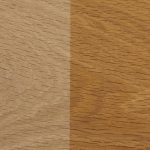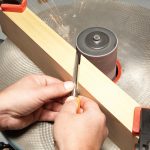We may receive a commission when you use our affiliate links. However, this does not impact our recommendations.

Wiping on. The most efficient method of applying stain is to wipe it on using a soaking-wet cloth. Notice on this stereo cabinet, which was made without a back, I’m not having any problem getting the stain into the inside corners.
Wiping is the efficient way to apply stain.
The purpose of this article is to emphasize what I’ve said in passing many times in this column: It’s much more efficient to wipe stain onto wood with a rag than to brush it.
Wiping is fast, almost as fast as spraying (without the downside of having to clean the spray gun). Wiping is also every bit as effective in all situations except possibly into recesses such as inside corners, fluting, deep carvings and the like.
Don’t get me wrong. I’m not against brushing stains. I just don’t see why anyone would do it, especially on large surfaces, and even more especially, when using any stain other than a slow drying oil-based stain. All other stains, including water-based, lacquer and all the dye stains, dry too rapidly to allow time to both brush on and get wiped off of large surfaces before the stain begins drying.
The Basics
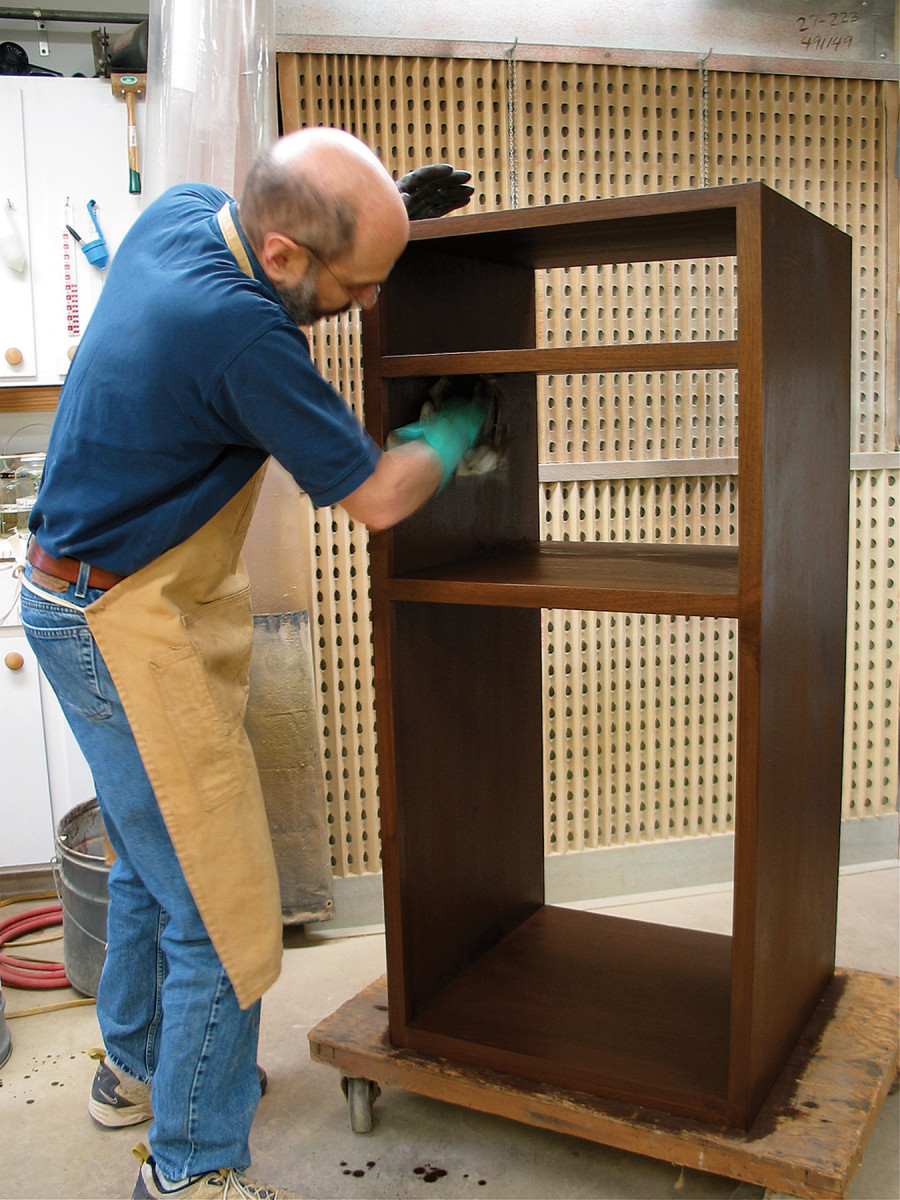
Wiping off. An oil-based stain dries slowly, which allows plenty of time to get the excess removed with a clean cloth before the stain dries. Had I been using a faster drying water-based, lacquer or dye stain on such a large object, I would have had a second person following closely behind my application wiping off. It’s not important to apply or wipe off with the grain as long as you wipe off all the excess. But on critical surfaces such as tabletops I typically make my last wiping-off strokes go with the grain just in case. The grain will disguise any streaks I may leave.
The basic rule for getting good results with any stain is to apply a wet coat and wipe off the excess before it dries.
You can use any tool – rag, brush, paint pad, roller or spray gun – to apply the stain. You can even dip the object into stain or pour the stain onto the wood and spread it around. It’s only important that you wipe off all the excess before the stain dries.
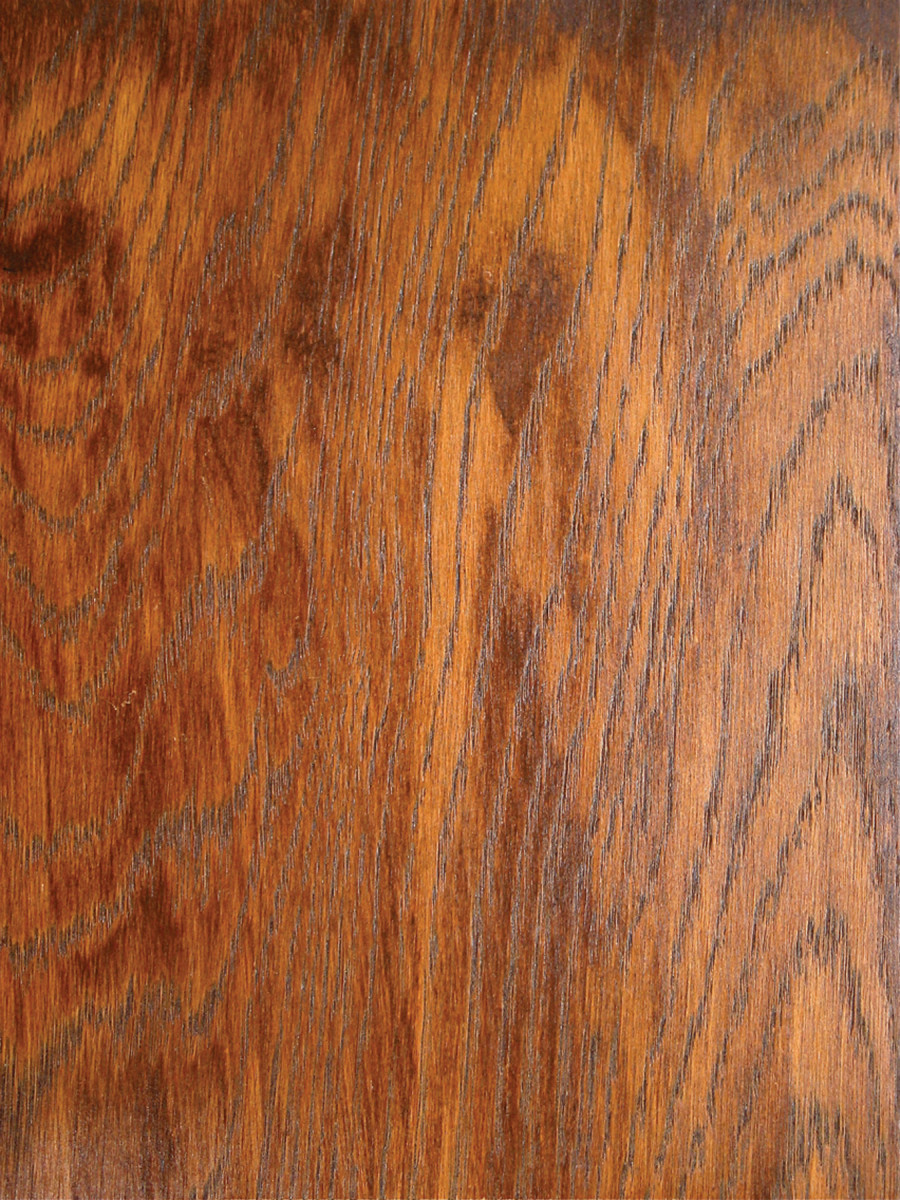
Blotching caused by fast drying. Lacquer, water-based and dye stains dry rapidly. So they could lead to this type of blotching if some of the stain dries before you have time to get it all wiped off.
If you let the stain begin to dry in spots before wiping off, you will get a type of blotching that is different from the blotching caused by uneven densities in woods such as pine, cherry and birch. You’ll get a blotching caused by thick dry spots of stain next to clean areas where the still-wet stain wipes off easily.
If you’re brushing one of the fast drying stains, not only might you cause blotching when you wipe off the excess, you may get lap marks caused by brushing more stain over stain that has dried.
Brushing is the slowest method of applying stain. So not only might you get blotching or lap marks, you’re also wasting time.
It’s more efficient to wipe stain than to brush it, and you’re less likely to have color problems.
The Exception
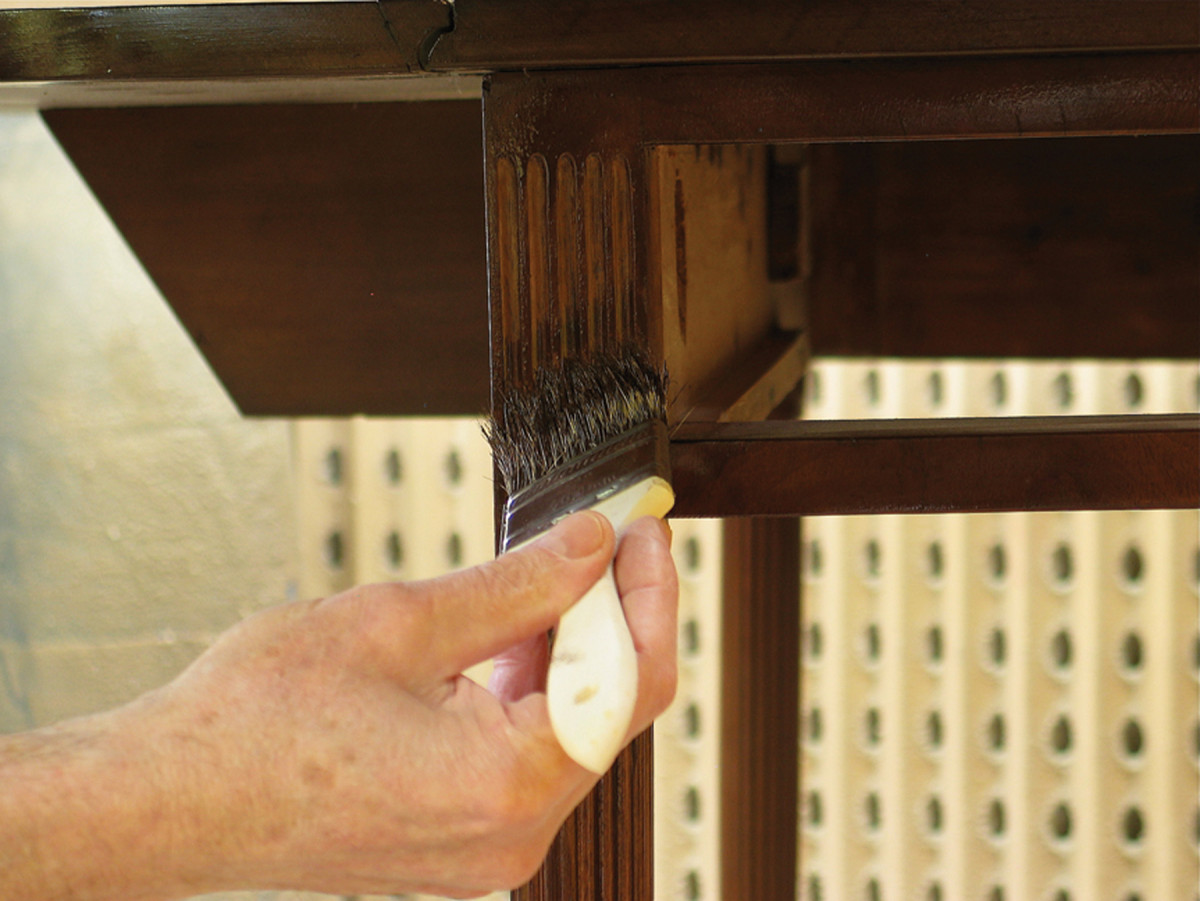
Brushing into recesses. If you don’t get your cloth wet enough with stain, you’ll have trouble getting the stain into recesses. You can always use a brush to help do this.
There is one exception, however. Brushing can be more efficient for getting stain into inside corners and other recessed areas.
To use a cloth (or a sponge) successfully requires getting it very wet. I’ve noticed that many woodworkers resist getting their cloth wet enough so the stain flows into recessed areas. If this is your problem, you can solve it by having a cheap throwaway brush or sponge brush handy to quickly work the stain into the hard-to-get-to places.
But a brush is unnecessary. You can get stain everywhere with a cloth as long as it is soaking wet. In 20 years of refinishing old furniture, most of which required staining, I don’t remember ever using a brush to apply a stain. And I rarely used a spray gun because of the time involved cleaning the gun.
I almost always used, and continue to use, a very wet cloth.
Fast-drying Stains
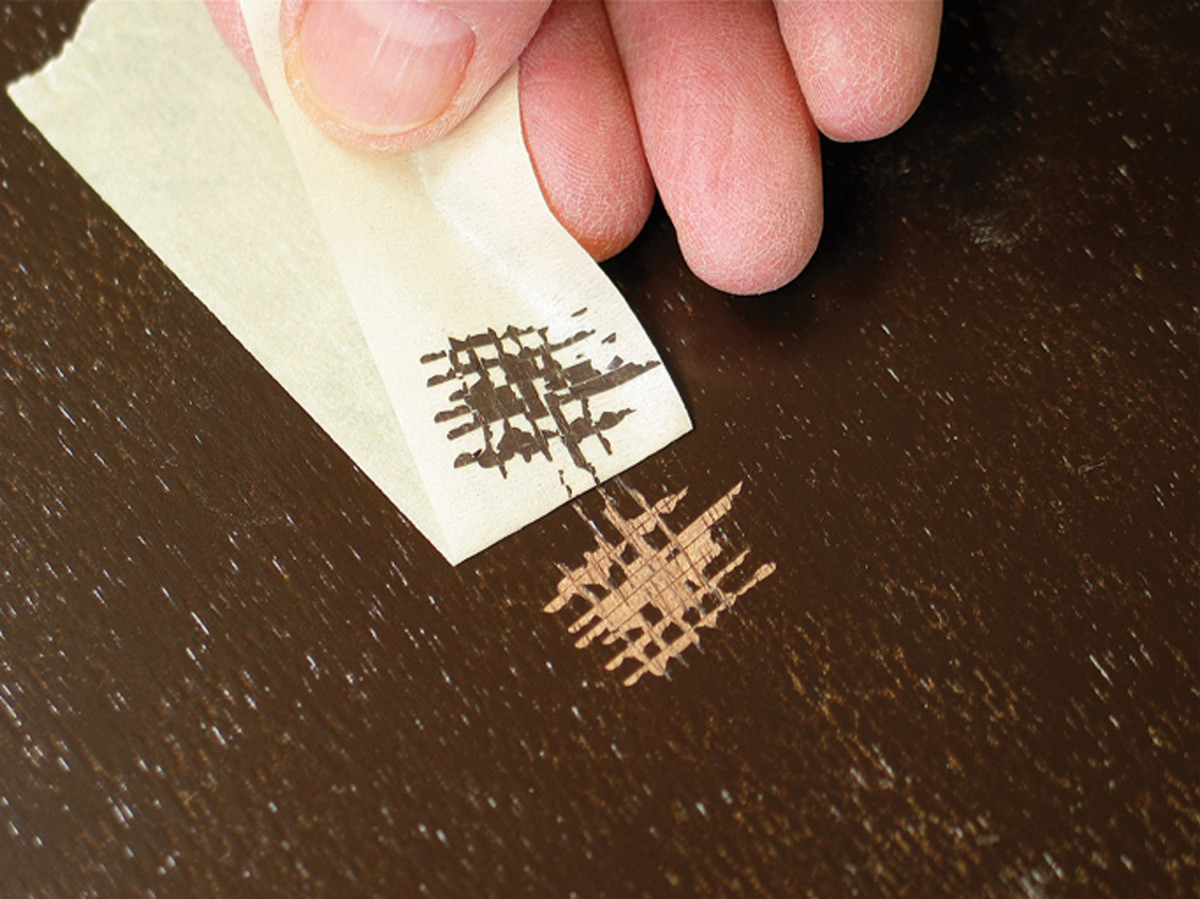
Bad practice. Brushing a stain thick, as is shown in the Minwax television ad, and not wiping off the excess, leads to a poor bond. The way to test for good adhesion is to score the stain and finish (on scrap) with a razor blade in a cross-hatch pattern with the cuts about 1⁄16″ apart. Press masking tape over the cuts and lift it quickly. If the cut lines remain fairly clean, the bond is good. If the tiny squares lift with the tape, the bond is poor.
Most woodworkers use oil-based stains, which dry so slowly it’s rare to have wipe-off problems. But some use water-based stains, some use dye stains and many professionals use lacquer stains.
Water-based stains (all stains that list water for clean-up) dry hard as quickly as the water evaporates. This can happen very rapidly in hot temperatures.
Dye stains (for example, Lockwood, Moser, TransTint and Solar-Lux) dry as quickly as the dye solvent, usually water, alcohol or acetone, evaporates. Again, they dry much faster in warm temperatures.
Professionals typically apply lacquer stains onto large surfaces such as kitchen cabinets by having one or two employees following right behind the application person wiping off the excess stain with large cloths.
You can do the same, of course, by getting a friend to follow after you apply.
But you still wouldn’t brush on the stain. Attempting to brush one of these fast drying stains onto a large surface is a sure ticket for uneven coloring.
(If you find yourself with some dried patches of stain, quickly apply more stain, maybe to smaller areas at a time, and work faster to get the excess removed. The additional stain will dissolve what is there.)
Why People Brush
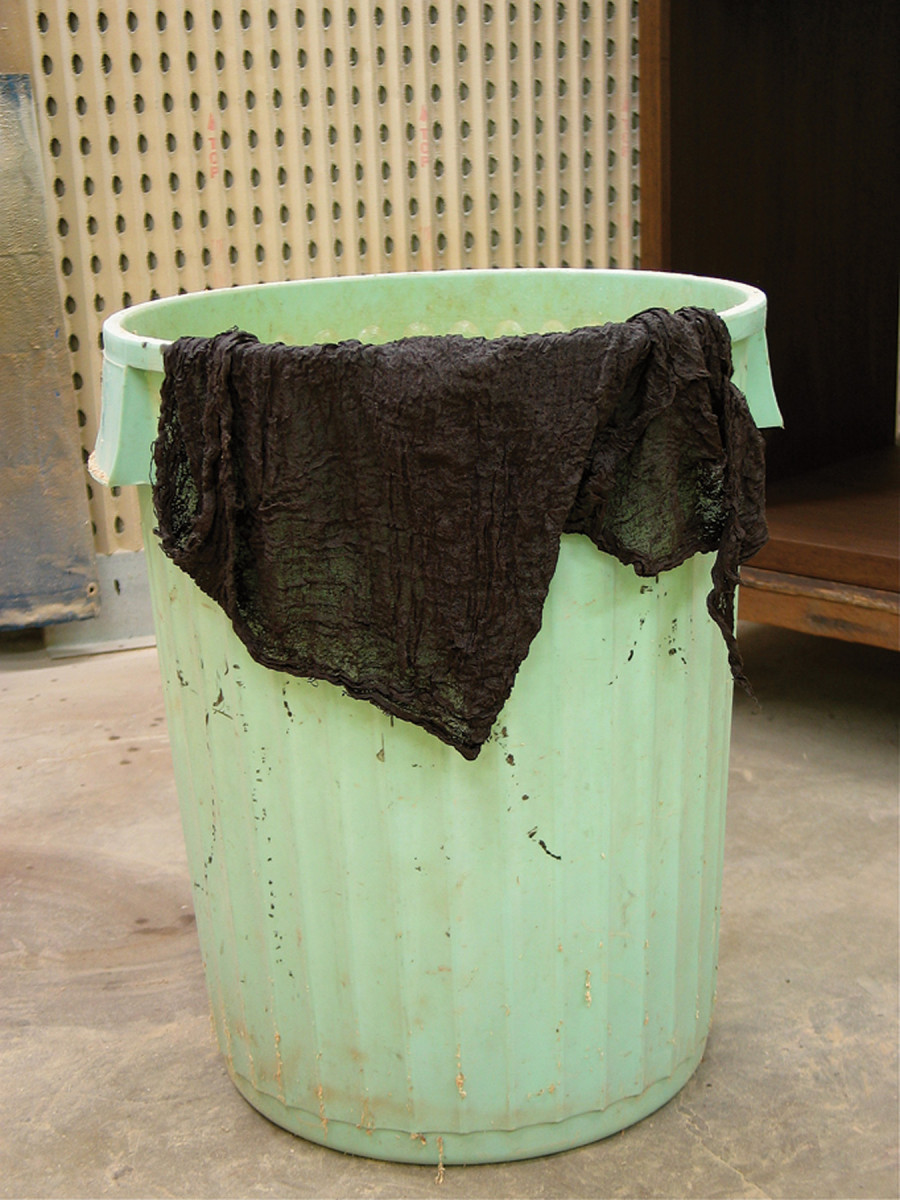
Safety. Modern VOC laws have led some stain manufacturers to replace solvent with oil, sometimes linseed oil, which can spontaneously combust. To be safe, always drape oil-stain-soaked rags over a trash can or other object to dry out and harden before disposing them.
I can think of only two reasons woodworkers brush rather than wipe stain onto their projects: cleanliness and the Minwax television ad.
It’s cleaner to brush than to wipe with a cloth that drips onto the floor and even onto your clothes if you aren’t careful. But drips can be cleaned up, and you can wear old clothes or an apron for protection.
Cleanliness is no excuse for brushing.
Cleanliness can’t be the only reason for brushing, however. For many years I’ve taught hands-on finishing and restoration classes and watched with amazement as virtually everyone in the class pulled out a brush (usually a foam brush) for applying their stain. Why aren’t they using a cloth?
A surprising number have explained they thought a brush was best because they saw one used on the Minwax television ad, which has run off and on for years. This ad shows someone slowly brushing a stain onto a panel, each stroke lined up perfectly side-by-side with the previous, and no trailing off as the brush runs out of stain.
Looks easy – but it’s almost impossible. You can’t keep brush strokes lined up so perfectly and you can’t control the release of the liquid stain so exactly over any significant length. Plus, a thickly applied stain (no wiping off is shown) will usually crack and result in peeling if struck by a blunt object.
To be fair, Minwax does present the option of wiping on the stain in the instructions on its cans – but the accompanying illustration still shows brushing.
All this aside, the basic question remains: Why brush when it’s so much faster to wipe?
Here are some supplies and tools we find essential in our everyday work around the shop. We may receive a commission from sales referred by our links; however, we have carefully selected these products for their usefulness and quality.







